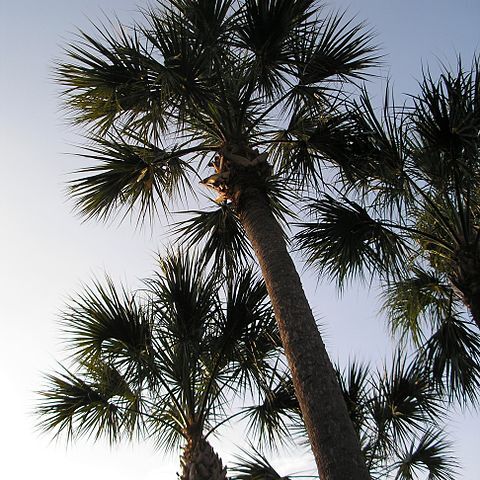Plants dwarf, moderate, or tall, usually robust. Stems solitary, aerial or subterranean, covered with leaf bases or clean, obscurely [strongly] ringed, becoming striate or smooth with age. Leaves few to many; sheath fibers soft; petiole split at base, completely unarmed; adaxial hastula well-developed, obtuse to acuminate-triangular; costa present; blade weakly to strongly costapalmate; plication induplicate; segments lanceolate, basally connate to connate for 2 1/2 length [or in groups of 2 or 3 segments connate for nearly entire length], often bearing thread-like fibers between segments; apices acute or 2-cleft, stiff or lax. Inflorescences axillary within crown of leaves, paniculate, erect or arching beyond leaves [shorter than leaves], with 2 or 3[--4] orders of branching; peduncular bracts 2--5, tightly clasping, inconspicuous; rachillae glabrous. Flowers bisexual, borne singly along rachillae, sessile, creamy white, fragrant; perianth 2-seriate; calyx cupulate; 3-lobed; petals 3, imbricate, elliptic, obovate or spatulate, alternate with outer whorl of stamens [basally connate], basally adnate to filaments; stamens 6 in 2 whorls; filaments narrowly triangular, basally connate; anthers dorsifixed, versatile; pistils 1, 1-carpellate, glabrous; nectaries 3, septal; ovules 3, but usually only one develops into seed; stigma minutely 3-lobed, papillose. Fruits drupes, berrylike, spheroid [oblate or pyriform ] or lobed when more than 1 seed develops; exocarp black; mesocarp blackish, dry to fleshy; endocarp brown, membranaceous. Seeds 1--3, oblate, glossy; endosperm bony, homogeneous; embryo nearly apical, lateral or nearly lateral; eophyll undivided, linear-lanceolate. nx = 18.
More
Spineless tree palms but the trunk sometimes rising little above the ground, base of the bole oblique, 'usually characterized by the essentially palmate leaf-blade through which a rachis (continuation of petiole) runs to the limit of the palman or undivided part, presenting a costapalmate structure and a curiously curved blade with the end of it declined toward the ground: spadices interfoliar, lacking a cymba but provided with conspicuous elongated green herbaceous sheathing nodifronds: flowers hermaphrodite, parts in 3's; calyx tubular or parts united; petals 3, the narrow petals widely flaring or even reflexed; stamens 6, exserted in anthesis; carpels 3, style united, stigma usually not divided: fruit a hard nearly globular or oblate or pyriform body 25 mm. or less in transverse diameter; seed commonly 1 by abortion, micropyle lateral, in some species the mesocarp remaining as a fibrous envelope of the seed.

